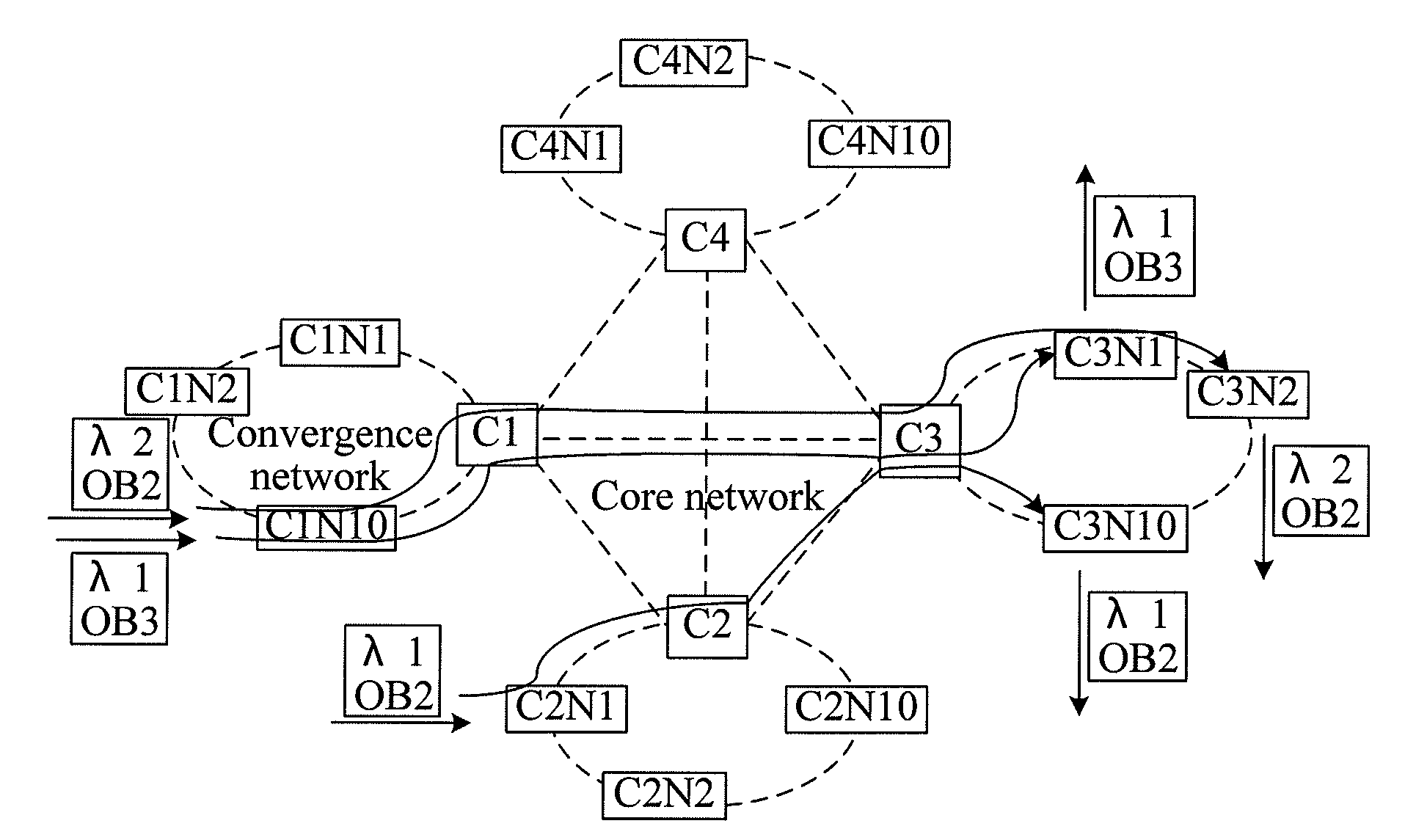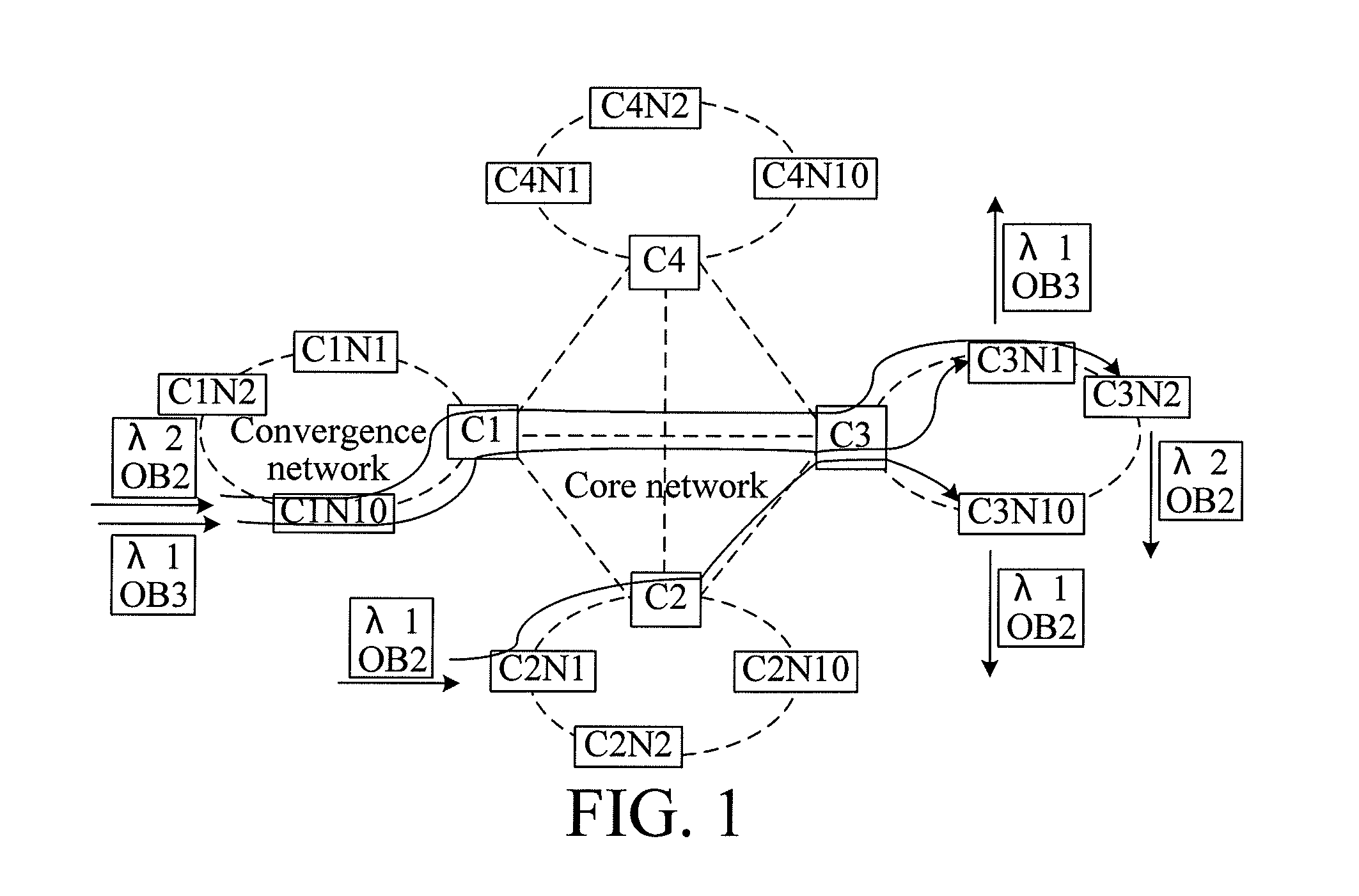Node, data processing system, and data processing method
a data processing system and node technology, applied in the field of communication, can solve the problems of increasing the flow of communications networks, increasing the requirements of increasing the requirements of the capacity and power consumption of the router in the node, so as to reduce the number of nodes, reduce the number of connections, and increase the number of available connections.
- Summary
- Abstract
- Description
- Claims
- Application Information
AI Technical Summary
Benefits of technology
Problems solved by technology
Method used
Image
Examples
first embodiment
[0045]FIG. 4 is a schematic structural view of a node according to the present invention. Referring to FIG. 4, the node includes a control module 11, a synchronization processing module 12, and a cross-connection module 13. The control module 11 is adapted to generate synchronization information, and send the synchronization information to the synchronization processing module 12. The control module 11 is further adapted to generate OB configuration information, and send the OB configuration information to the cross-connection module 13. The synchronization processing module 12 performs a synchronization process on OB paths at one or more wavelengths according to the synchronization information. Then, the cross-connection module 13 performs, according to the OB configuration information, a cross-connection process on the OB paths, on which the synchronization process has been performed. In this embodiment, one or more synchronization processing modules 12 are provided, but only one ...
second embodiment
[0047]FIG. 5 is a schematic structural view of a node according to the present invention. Referring to FIG. 5, the node includes a control module 11, a synchronization processing module 12, and a cross-connection module 13. The control module 11 includes a detecting unit 111, a generating unit 112, and a configuration information generating unit 113. The detecting unit 111 is adapted to detect an OB frame header clock and an OB time-slot clock from a pre-separated signal, and send the OB frame header clock to the synchronization processing module 12, where the pre-separated signal in this embodiment is a control channel. The generating unit 112 is adapted to perform a frequency locking process and a delaying process on the OB frame header clock and the OB time-slot clock to generate a new OB frame header clock and a new OB time-slot clock, and send the new OB frame header clock to the synchronization processing module 12. The generating unit 112 is further adapted to perform a filte...
third embodiment
[0061]FIG. 10 is a view of a time sequence relation between a control channel and OB paths according to the present invention. Referring to FIG. 10, the control channel mainly includes an OB frame identifier and a payload, where the OB frame identifier represents a start position of the OB frame. During the synchronization procedure between the OB paths and the control channel, the OB frames of the OB paths need to be aligned with the OB frame identifier in the control channel, for example, the OB frames at λ1 are aligned with the OB frame identifier in the control channel λc.
[0062]In addition, all the edge nodes in FIG. 1 may adopt the burst transmitter having the adjustable wavelength and the burst receiver having the fixed wavelength. Here, each edge node receives the OB paths at one fixed wavelength, and this situation is not shown in FIG. 1. A plurality of OB paths bearing the service data among the nodes as shown in FIG. 1 is only adapted to describe a plurality of situations ...
PUM
 Login to View More
Login to View More Abstract
Description
Claims
Application Information
 Login to View More
Login to View More - R&D
- Intellectual Property
- Life Sciences
- Materials
- Tech Scout
- Unparalleled Data Quality
- Higher Quality Content
- 60% Fewer Hallucinations
Browse by: Latest US Patents, China's latest patents, Technical Efficacy Thesaurus, Application Domain, Technology Topic, Popular Technical Reports.
© 2025 PatSnap. All rights reserved.Legal|Privacy policy|Modern Slavery Act Transparency Statement|Sitemap|About US| Contact US: help@patsnap.com



